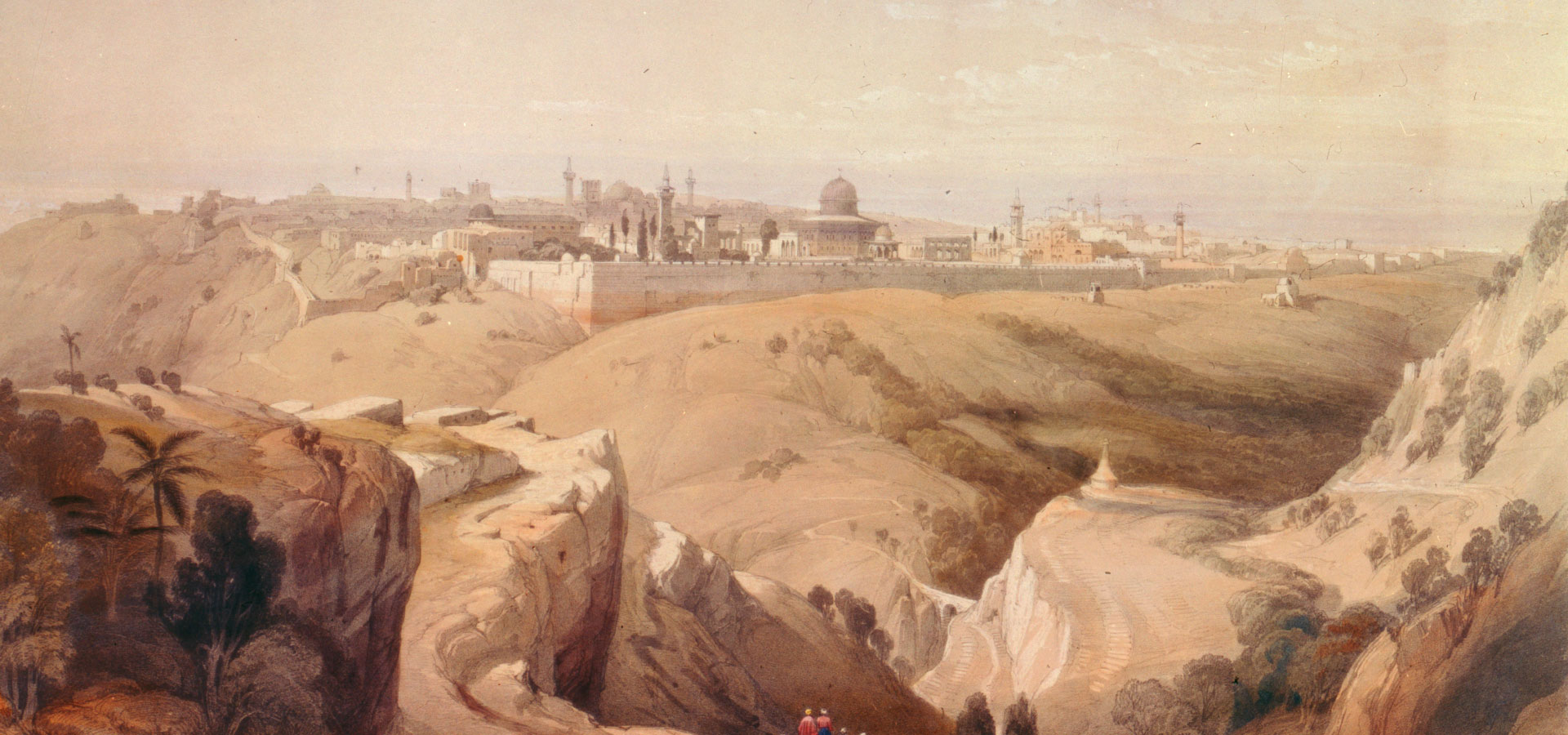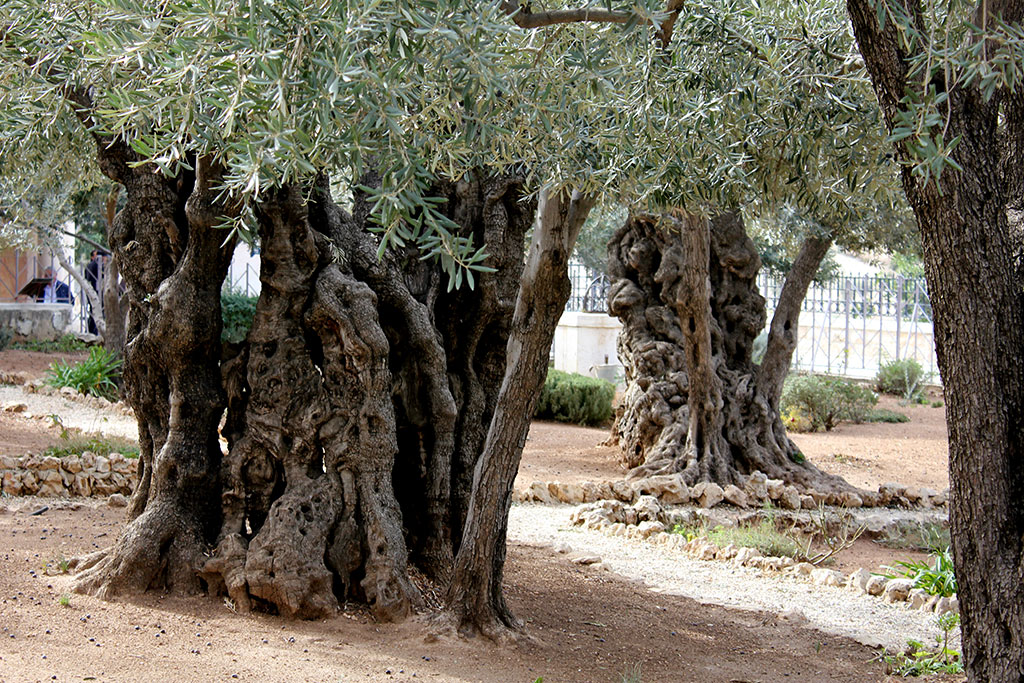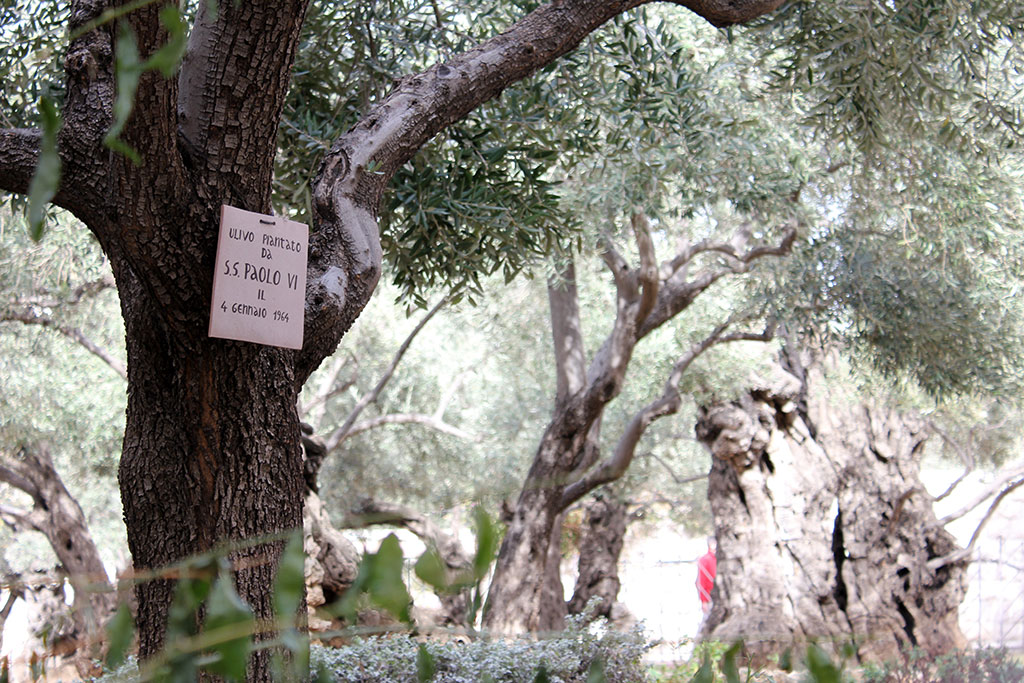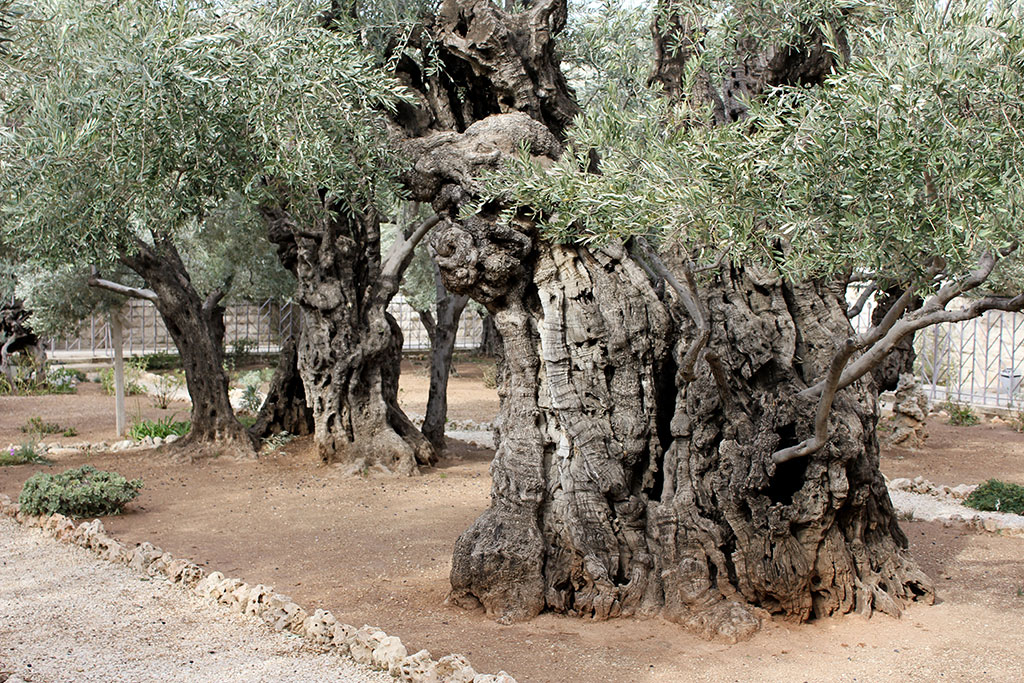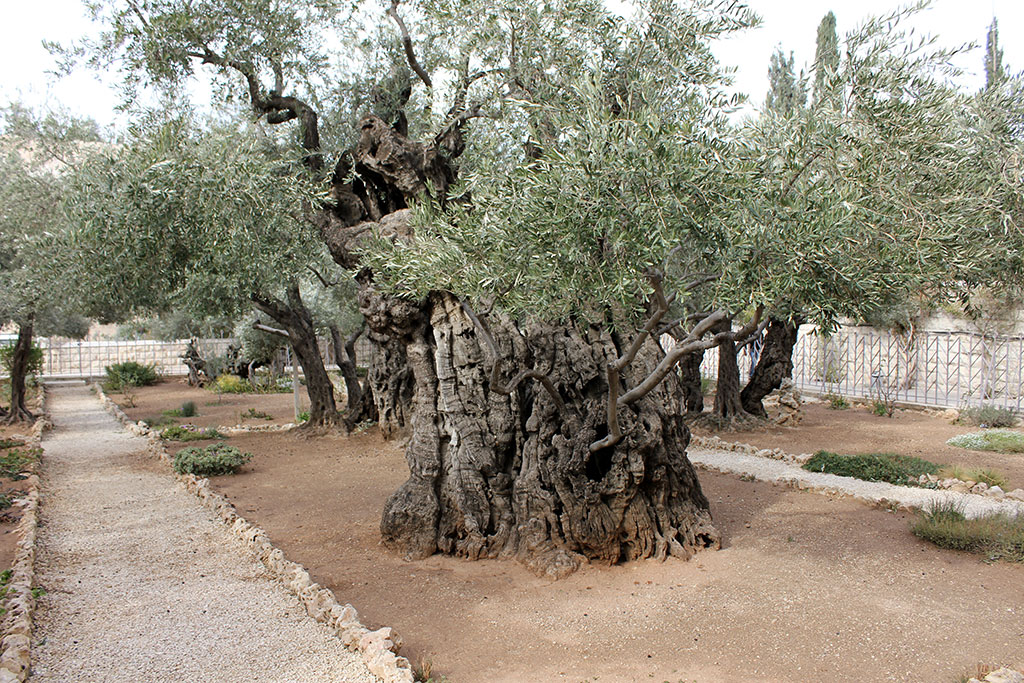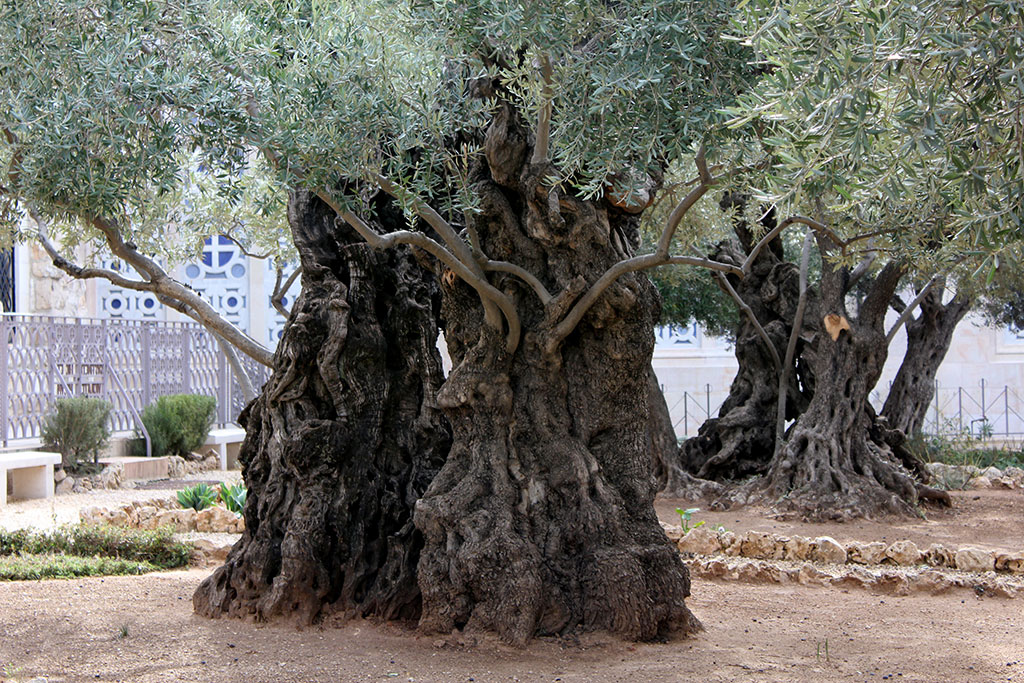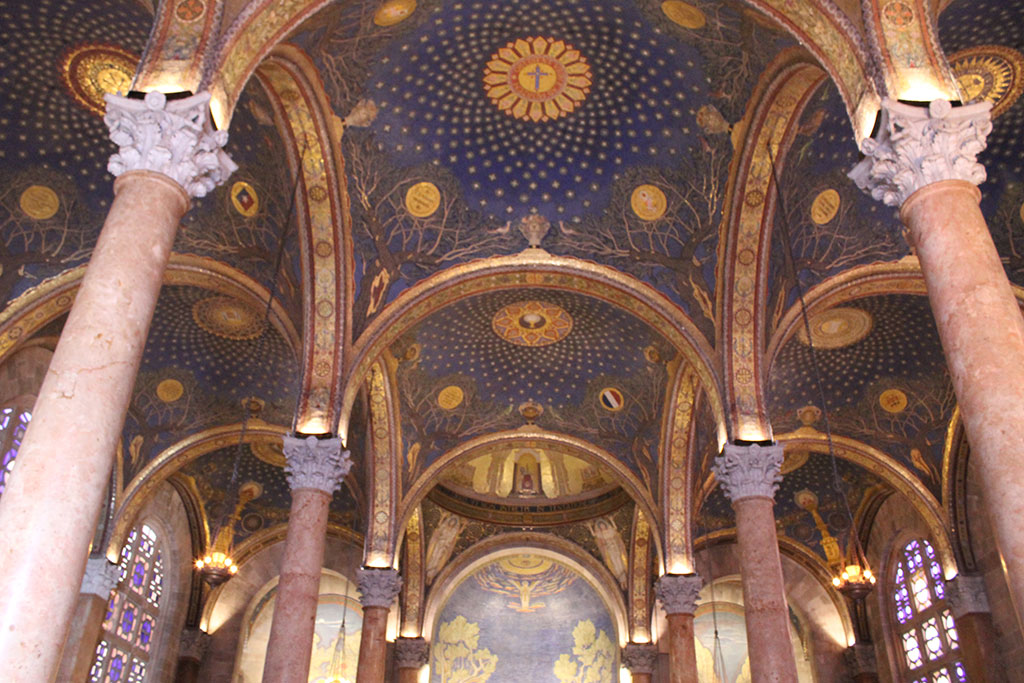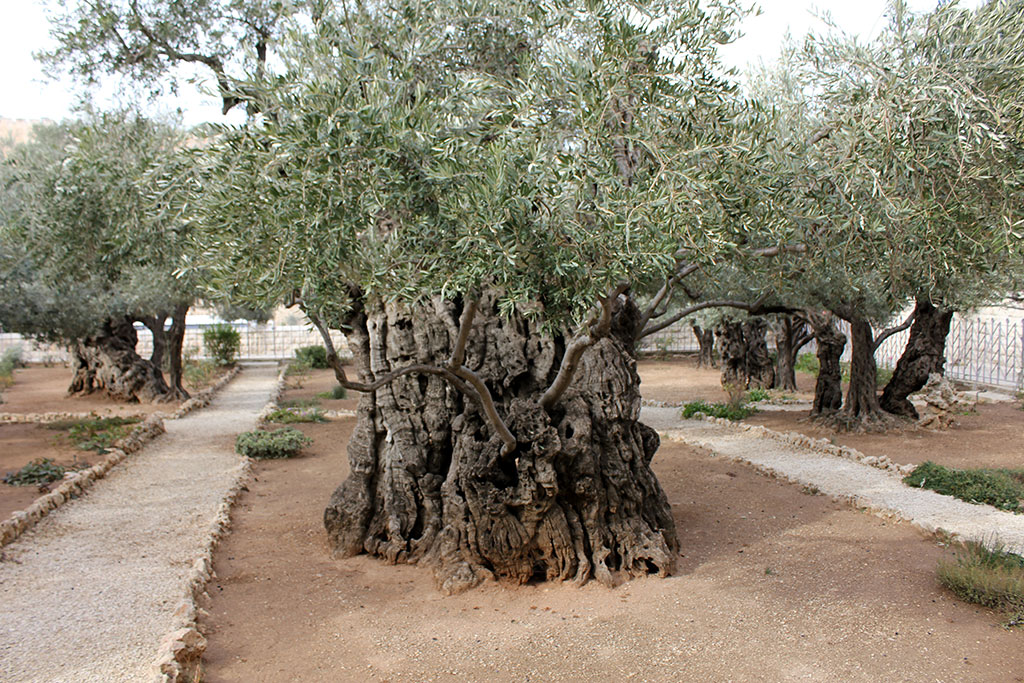Ancient traditions point to this place been the holy sepulchre of Mary, the mother of the Messiah, Jesus.
By very ancient traditions of eastern christians teaches that the virgin Mary, mother of Jesus, died a natural death (the Dormition of the Theotokos, the falling asleep), like any human being; that her soul was received by Christ upon death; and that her body was resurrected on the third day after her repose, at which time she was taken up, soul and body, into heaven in anticipation of the general resurrection.
Her tomb, according to this ancient tradition, was found empty on the third day like the Jesus tomb.
The Church of the Sepulchre of Saint Mary, also Tomb of the Virgin Mary, is a christian church with a ancient tomb in the Kidron Valley in Jerusalem, also in the foot of Mount of Olives, believed by Eastern Christians to be the burial place of Mary, the mother of Jesus.
The catholic tradition teaching holds that Mary was "assumed" into heaven in her body form, the assumption; the question of whether or not Mary actually underwent physical death remains open in the catholic vision; however, most theologians believe that she did undergo death before her assumption.
A narrative known as the Euthymiaca Historia, written probably by Cyril of Scythopolis in the 5th century relates how the Emperor Marcian and his wife, Pulcheria, requested the relics of the virgin Mary from Juvenal, the Patriarch of Jerusalem, while he was attending the Council of Chalcedon in 451 AD. According to this history, the patriarch if Jerusalem answer that, on the third day after her death, the tomb of Mary was empty, only her shroud was found and preserved in the church.
According to another tradition it was the cincture of the Virgin Mary which was found in the Mary’’s sepulchre.
In 1972, Bellarmino Bagatti, a franciscan friar and archaeologist of Catholic Church, excavated the site and found evidences of an ancient burial place dating to the 1st century AD. His excavation and findings have not yet been subject to review by the archaeological community, and the validity of his dating can not confirmed.

In 1972, Bellarmino Bagatti, a Franciscan friar and archaeologist, excavated the site and found evidence of an ancient cemetery dating to the 1st century; his findings have not yet been subject to peer review by the wider archaeological community, and the validity of his dating has not been fully assessed.
Bagatti interpreted the remains to indicate that the cemetery's initial structure consisted of three chambers (the actual tomb being the inner chamber of the whole complex), was adjudged in accordance with the customs of that period. Later, the tomb interpreted by the local Christians to be that of Mary's was isolated from the rest of the necropolis, by cutting the surrounding rock face away from it. An edicule was built on the tomb.
A small upper church on an octagonal footing was built by Patriarch Juvenal (during Marcian's rule) over the location in the 5th century, and was destroyed in the Persian invasion of 614. During the following centuries the church was destroyed and rebuilt many times, but the crypt was left untouched. As for the Muslims, it is the burial place of the mother of prophet Isa (Jesus). It was rebuilt then in 1130 by the Crusaders, who installed a walled Benedictine monastery, the Abbey of St. Mary of the Valley of Jehoshaphat.
The monastic complex included early Gothic columns, red-on-green frescoes, and three towers for protection. The staircase and entrance were also part of the Crusaders' church. This church was destroyed by Saladin in 1187, but the crypt was still respected; all that was left was the south entrance and staircase, the masonry of the upper church being used to build the walls of Jerusalem.
In the second half of the 14th century Franciscan friars rebuilt the church once more. The Greek Orthodox clergy launched a Palm Sunday takeover of various Holy Land sites, including this one, in 1757 and expelled the Franciscans. The Ottomans supported this "status quo" in the courts. Since then, the tomb has been owned by the Greek Orthodox Church and Armenian Apostolical Church of Jerusalem, while the grotto of Gethsemane remained in the possession of the Franciscans.

David on the Mount of Olives
And David went up by the ascent of mount Olivet, and wept as he went up, and had his head covered, and he went barefoot: and all the people that was with him covered every man his head, and they went up, weeping as they went up.
And one told David, saying, Ahithophel is among the conspirators with Absalom. And David said, O LORD, I pray thee, turn the counsel of Ahithophel into foolishness. And it came to pass, that when David was come to the top of the mount, where he worshipped God, behold, Hushai the Archite came to meet him with his coat rent, and earth upon his head: Unto whom David said, If thou passest on with me, then thou shalt be a burden unto me: But if thou return to the city, and say unto Absalom, I will be thy servant, O king; as I have been thy father’s servant hitherto, so will I now also be thy servant: then mayest thou for me defeat the counsel of Ahithophel. And hast thou not there with thee Zadok and Abiathar the priests? therefore it shall be, that what thing soever thou shalt hear out of the king’s house, thou shalt tell it to Zadok and Abiathar the priests. Behold, they have there with them their two sons, Ahimaaz Zadok’s son, and Jonathan Abiathar’s son; and by them ye shall send unto me every thing that ye can hear. So Hushai David’s friend came into the city, and Absalom came into Jerusalem.
And when David was a little past the top of the hill, behold, Ziba the servant of Mephibosheth met him, with a couple of asses saddled, and upon them two hundred loaves of bread, and an hundred bunches of raisins, and an hundred of summer fruits, and a bottle of wine. And the king said unto Ziba, What meanest thou by these? And Ziba said, The asses be for the king’s household to ride on; and the bread and summer fruit for the young men to eat; and the wine, that such as be faint in the wilderness may drink.
2 Samuel 15:30–16:2 KJV
